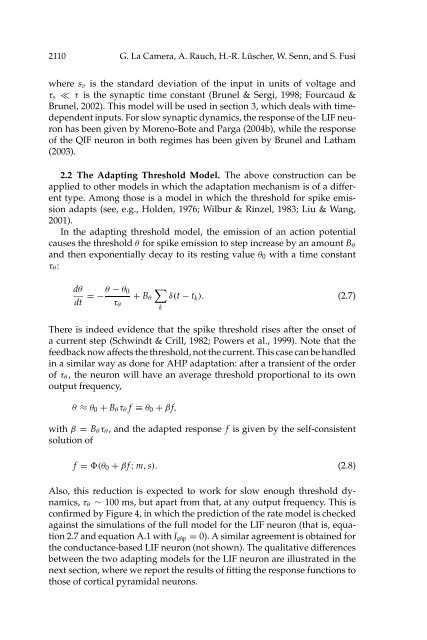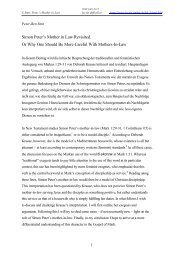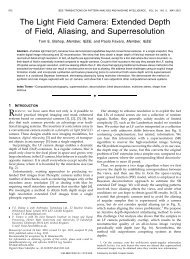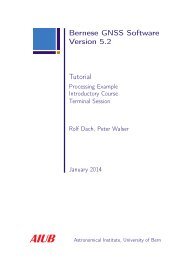Minimal Models of Adapted Neuronal Response to In Vivo–Like ...
Minimal Models of Adapted Neuronal Response to In Vivo–Like ...
Minimal Models of Adapted Neuronal Response to In Vivo–Like ...
You also want an ePaper? Increase the reach of your titles
YUMPU automatically turns print PDFs into web optimized ePapers that Google loves.
2110 G. La Camera, A. Rauch, H.-R. Lüscher, W. Senn, and S. Fusi<br />
where s v is the standard deviation <strong>of</strong> the input in units <strong>of</strong> voltage and<br />
τ s ≪ τ is the synaptic time constant (Brunel & Sergi, 1998; Fourcaud &<br />
Brunel, 2002). This model will be used in section 3, which deals with timedependent<br />
inputs. For slow synaptic dynamics, the response <strong>of</strong> the LIF neuron<br />
has been given by Moreno-Bote and Parga (2004b), while the response<br />
<strong>of</strong> the QIF neuron in both regimes has been given by Brunel and Latham<br />
(2003).<br />
2.2 The Adapting Threshold Model. The above construction can be<br />
applied <strong>to</strong> other models in which the adaptation mechanism is <strong>of</strong> a different<br />
type. Among those is a model in which the threshold for spike emission<br />
adapts (see, e.g., Holden, 1976; Wilbur & Rinzel, 1983; Liu & Wang,<br />
2001).<br />
<strong>In</strong> the adapting threshold model, the emission <strong>of</strong> an action potential<br />
causes the threshold θ for spike emission <strong>to</strong> step increase by an amount B θ<br />
and then exponentially decay <strong>to</strong> its resting value θ 0 with a time constant<br />
τ θ :<br />
dθ<br />
dt =−θ − θ 0<br />
τ θ<br />
∑<br />
+ B θ δ(t − t k ). (2.7)<br />
k<br />
There is indeed evidence that the spike threshold rises after the onset <strong>of</strong><br />
a current step (Schwindt & Crill, 1982; Powers et al., 1999). Note that the<br />
feedback now affects the threshold, not the current. This case can be handled<br />
in a similar way as done for AHP adaptation: after a transient <strong>of</strong> the order<br />
<strong>of</strong> τ θ , the neuron will have an average threshold proportional <strong>to</strong> its own<br />
output frequency,<br />
θ ≈ θ 0 + B θ τ θ f ≡ θ 0 + βf,<br />
with β = B θ τ θ , and the adapted response f is given by the self-consistent<br />
solution <strong>of</strong><br />
f = (θ 0 + βf ; m, s). (2.8)<br />
Also, this reduction is expected <strong>to</strong> work for slow enough threshold dynamics,<br />
τ θ ∼ 100 ms, but apart from that, at any output frequency. This is<br />
confirmed by Figure 4, in which the prediction <strong>of</strong> the rate model is checked<br />
against the simulations <strong>of</strong> the full model for the LIF neuron (that is, equation<br />
2.7 and equation A.1 with I ahp = 0). A similar agreement is obtained for<br />
the conductance-based LIF neuron (not shown). The qualitative differences<br />
between the two adapting models for the LIF neuron are illustrated in the<br />
next section, where we report the results <strong>of</strong> fitting the response functions <strong>to</strong><br />
those <strong>of</strong> cortical pyramidal neurons.
















